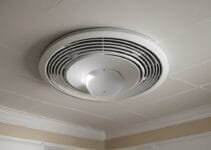Introduction to Tuckpointing
Tuckpointing is a specialized masonry repair technique used to maintain and enhance brick structures. This process involves removing old, deteriorated mortar between bricks and replacing it with fresh mortar. The goal is to improve the structural integrity and appearance of brickwork. The name “tuckpointing” originates from the method of using two contrasting colors of mortar in the joints of brickwork, which gives the illusion of very fine joints.

Read this article and do not forget to check the YouTube channel “Better-Home Inspection and Improvements” for amazing videos:
https://www.youtube.com/@better-homeinspectionandim1636
Brick and Mortar Repair Tuck Pointing demonstration (video)
One of the primary benefits of tuckpointing is the increased structural integrity it provides. Over time, mortar can deteriorate due to weathering, moisture, and other environmental factors. This deterioration can compromise the stability of the entire structure. By replacing the old mortar, tuckpointing helps to strengthen the brickwork and prevent potential issues such as water infiltration and structural failure.
In addition to its structural benefits, tuckpointing also offers significant aesthetic improvements. Fresh mortar can enhance the overall appearance of a building by making the brickwork look new and well-maintained. This visual enhancement can be particularly important for historic buildings, where maintaining the original appearance is often a key consideration.
Furthermore, tuckpointing extends the lifespan of brick structures. By addressing mortar deterioration early, property owners can avoid more extensive and costly repairs in the future. Regular maintenance through tuckpointing ensures that brickwork remains in good condition for many years, preserving the building’s value and functionality.
Overall, tuckpointing is a crucial practice for maintaining the health and beauty of brick structures. Whether for residential or commercial buildings, this technique plays a vital role in prolonging the life of masonry work and enhancing its visual appeal.
The Tuckpointing Process
Tuckpointing is a meticulous process that involves several critical steps to ensure the longevity and aesthetic appeal of brick structures. The first phase of the tuckpointing process begins with the preparation of the brickwork. This involves a thorough cleaning to remove dirt, dust, and any loose debris from the surface of the bricks and the mortar joints. A stiff brush and a vacuum are often used for this purpose, and in some cases, a pressure washer may be employed for more stubborn residues.
Once the brickwork is clean, the next step is to remove the old, damaged mortar. This is typically done using a hammer and chisel or a specialized mortar raking tool. Care must be taken to avoid damaging the bricks during this process. The depth of the mortar removal should be consistent, usually about half an inch to three-quarters of an inch, to ensure a strong bond with the new mortar.
With the old mortar removed, the brickwork is now ready for the application of new mortar. The mortar mix should be prepared according to the manufacturer’s instructions, ensuring the correct consistency for optimal adhesion. The new mortar is then applied using a pointing trowel, filling the joints and compacting the mortar firmly into place. It is crucial to work in small sections to prevent the mortar from drying out too quickly.
After the mortar is applied, the next step involves the finishing techniques. A tuckpointing or jointing tool is used to shape and smooth the mortar, ensuring a uniform appearance. For a professional finish, the joints should be carefully tooled to match the existing mortar profile. It is important to avoid common mistakes such as over-filling or under-filling the joints, as these can compromise the structural integrity and appearance of the brickwork.
Finally, to ensure the new mortar sets correctly, it is advisable to keep the brickwork moist for a few days after the tuckpointing process. This can be done by lightly misting the area with water. By following these steps and paying attention to detail, a durable and visually appealing result can be achieved.
Signs Your Home Needs Tuckpointing
Tuckpointing is a vital maintenance task for preserving the integrity of brick structures. Identifying early signs of deteriorating mortar can prevent more extensive damage. One of the primary indicators that your home may need tuckpointing is visible cracks in the mortar joints. These cracks can appear as hairline fractures or more pronounced separations between the bricks. Over time, these cracks can expand, leading to structural weaknesses and potential water ingress.
Another sign that tuckpointing may be necessary is crumbling or missing mortar. Mortar that is flaking away or has fallen out entirely leaves gaps between the bricks, compromising the stability of the wall. This deterioration often results from weather exposure, freeze-thaw cycles, and general wear and tear. If you notice loose bricks or mortar debris around your property, it’s a clear indication that tuckpointing is required.
Water damage is also a critical sign that your home’s brickwork needs attention. Efflorescence, a white powdery substance on the brick surface, indicates that water is seeping through the mortar and bringing salts to the surface. Additionally, damp spots, mold growth, and interior wall damage can result from water penetration through compromised mortar joints. Addressing these issues promptly with tuckpointing can prevent further moisture-related problems.
Routine inspections of your brickwork can help in early detection of these signs. Walk around your home periodically, especially after harsh weather conditions, and inspect the mortar joints closely. Look for any signs of deterioration, such as cracks, crumbling, or discoloration. Using a small tool, you can gently probe the mortar to test its hardness; if it crumbles easily, it’s time to consider tuckpointing.
Neglecting necessary tuckpointing repairs can lead to severe consequences. Unrepaired mortar damage can escalate to structural instability, increased water damage, and higher repair costs down the line. By addressing the signs early, you can maintain the structural integrity and aesthetic appeal of your brickwork, ensuring the longevity of your home.
Benefits of Tuckpointing for Longevity and Aesthetics
Tuckpointing is an essential maintenance practice for brick structures, offering significant benefits in terms of longevity and aesthetics. One of the primary advantages of tuckpointing is its ability to prevent moisture penetration. By meticulously replacing deteriorated mortar with fresh, well-adhered mortar, tuckpointing creates a robust barrier against water ingress. This is crucial because moisture is one of the leading causes of structural damage in brickwork. When water seeps into the mortar joints, it can freeze and expand, leading to cracks and, eventually, severe structural issues. Tuckpointing addresses this problem, significantly reducing the risk of damage caused by freeze-thaw cycles.
In addition to moisture control, tuckpointing enhances the structural integrity of brick buildings. By reinforcing the mortar joints, tuckpointing helps distribute loads more evenly across the brickwork, thereby increasing the overall stability of the structure. This preventive measure not only extends the lifespan of the building but also reduces the likelihood of costly repairs in the future. The reinforced mortar joints offer added resilience against environmental stressors such as wind, temperature fluctuations, and seismic activities.
From an aesthetic perspective, tuckpointing plays a crucial role in revitalizing the appearance of brick structures. Over time, mortar joints can become discolored, eroded, or mismatched, detracting from the overall visual appeal of the building. Tuckpointing restores the uniformity and sharpness of the brickwork, enhancing its visual appeal. The process involves careful color matching of the new mortar to the existing brickwork, ensuring a seamless and aesthetically pleasing finish. This transformation can significantly boost the curb appeal and market value of the property.
Moreover, tuckpointing offers long-term cost savings. By addressing minor issues before they escalate into major problems, property owners can avoid expensive structural repairs and replacements. Regular tuckpointing maintenance can extend the life of brick structures by several decades, making it a cost-effective investment. The improved resistance to moisture and environmental stressors means less frequent repairs and lower maintenance costs over time, providing substantial financial benefits to property owners.
Other related posts from our website:
https://howtobuildahouseblog.com/trend-alert-50-living-rooms-featuring-brick-color-sofas/
https://howtobuildahouseblog.com/how-to-paint-a-brick-wall-on-your-balcony/
https://howtobuildahouseblog.com/beautiful-brick-patio-design-ideas/
Thank you so much for your attention.
Stay tuned. We will upload many other amazing posts to our website and videos onto our YouTube channel.
Thank you so much.
for your time and attention.
Best Regards
See you to another post,
Bye, Bye


